Introduction
Would you like to be notified when a new survey report is released? Sign up here
Social participation has been linked to the wellbeing of individuals, families and their communities in a range of studies, with high levels of community participation found to be associated with better physical and mental wellbeing. Social participation includes participation in both formal and informal groups, including involvement in community activities such as local events and clubs.
Particular factors have been found to be associated with increased community participation, including cultural background, socio-economic status, gender and age. Structural and organisational factors have also been identified, including ease of access, transport, availability, cost, location, engagement with local stakeholders and the quality and safety of facilities. A study by Berry, Rodgers and Dear (2007), for example, identified that while people may choose to participate in their community in many ways and at different levels, regular involvement in certain activities is especially beneficial, particularly those pursuits that are characterised by personal involvement, initiative and effort.
Relationships Australia has previously explored different ways people participate socially in their community with a view to understanding how community participation impacts on positive wellbeing. The focus of Relationships Australia’s April 2018 online survey was to find out the level of engagement with the local community and the level of social participation of visitors to our website.
Previous research finds that…
- Community participation activities such as taking an active interest in current affairs; regularly socialising with household members, friends, extended family and neighbours; and taking part in organised community activities have been associated with improved wellbeing.
- Happier people give more and giving also leads to increased happiness.
- People who volunteer have lower mortality rates, greater functional ability, and lower rates of depression later in life than those who do not volunteer.
- Money is associated with wellbeing because having enough money improves living conditions and increases social status. However, happiness only increases with income to a point. A range of studies have shown that it is the quality of our personal relationships, not income that has the greatest effect on our state of wellbeing.
- Believing that money is the key to happiness can also harm a person’s wellbeing. For example, a person who chooses to work a lot of overtime misses out on time with family, friends and leisure pursuits.
Results
1002 people responded to the Relationships Australia online survey in April 2018. Around 77 per cent of respondents identified as female, with more female than male respondents in every age group (see Figure 1 below). Almost eighty-four per cent of survey respondents were aged between 20-59 years, and about forty per cent of respondents comprised women aged between 30-49 years (inclusive).
As for previous surveys, the demographic profile of survey respondents remains consistent with our experience of the groups of people that would be accessing the Relationships Australia website.
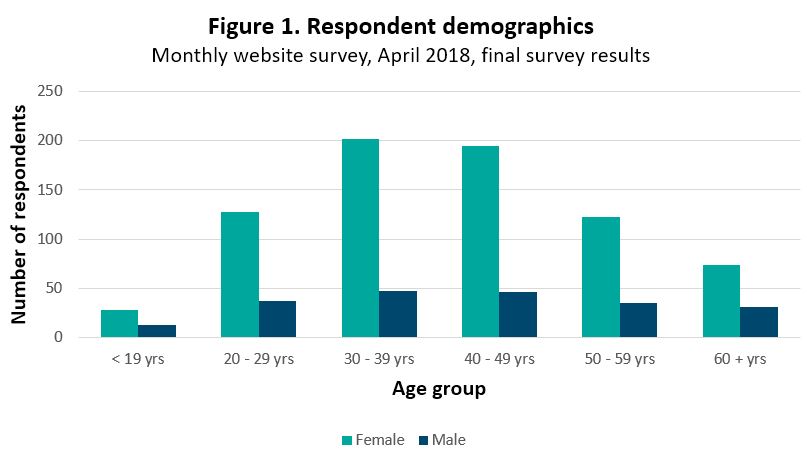
Around eleven per cent of both men and women responded they never chat to their neighbours, and more male (31%) than female (24%) respondents said they rarely chat with their neighbours. Forty-one per cent of female respondents said they occasionally or sometimes chat to their neighbours, compared with thirty-six per cent of male respondents. About one quarter of both male (21%) and female (23%) respondents said they chat with their neighbours often or very often (see Figure 2). Figure 3 shows that the majority of men (65%) and women (65%) feel their reported level of communication with neighbours was just about right. Around a third of both men (33%) and women (34%) thought their reported amount was too little.
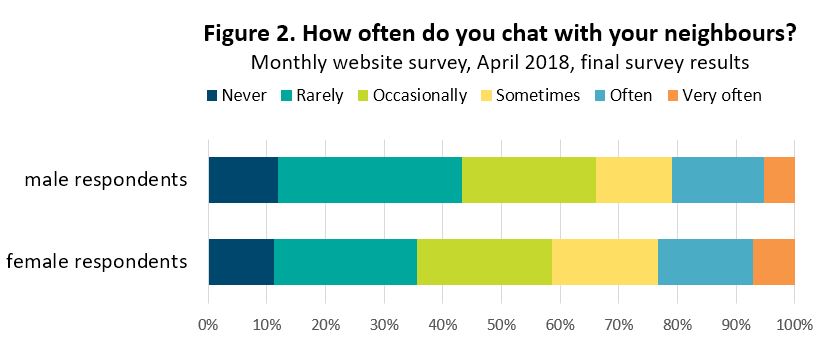
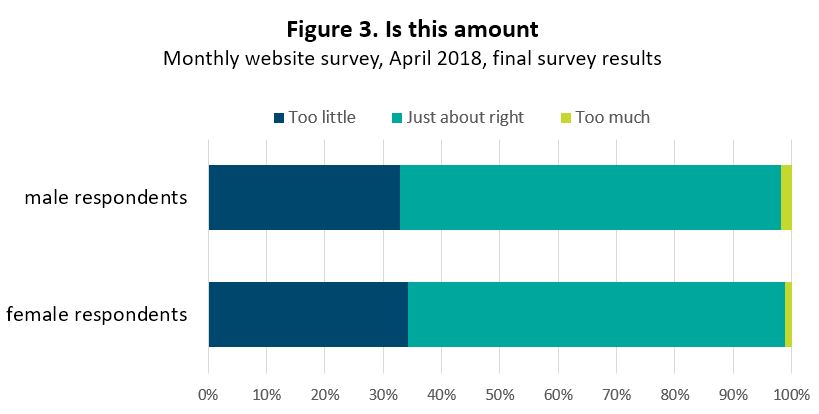
Survey respondents were then asked whether they or their children, if they have any, attend a local school or regularly play sport in a local team. Just under half of both male and female respondents did not have children (48%), but for those who did, around one-third (33%) reported that their child does attend a local school (Figure 4). The majority of respondents (68%) reported they or their children do not regularly play sport in a local team (see Figure 6), with twenty-nine per cent reporting they do.
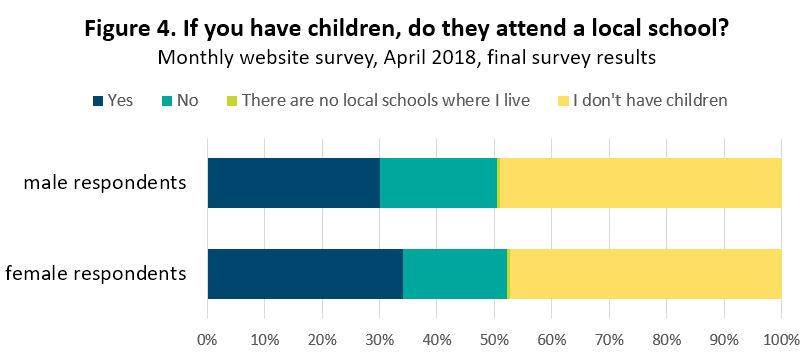
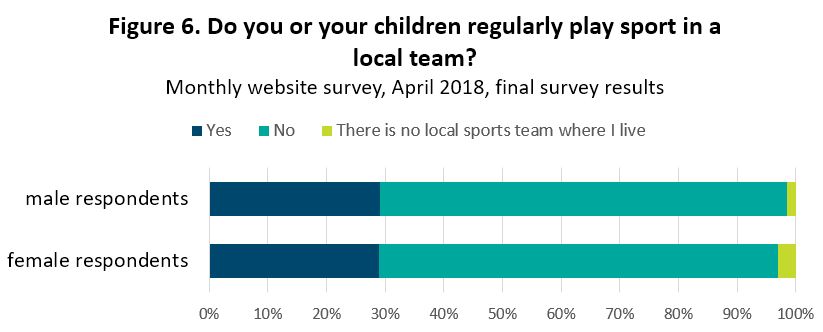
Survey respondents were also asked whether they regularly go to the park or local playground, regularly shop at the local store or regularly attend local community facility (such as playgroup, hobby, or special interest). Around half of female respondents (49%) said they regularly go to the local park or playground, compared with fifty-five per cent of male respondents (Figure 5), and Figure 7 shows the majority of both male (85%) and female (94%) respondents reported they shop at a local store regularly. Fifty-eight per cent of female respondents they do not regularly attend a local community facility, compared with around two-thirds (65%) of male respondents. Slightly more female (39%) than male (33%) respondents reported they do regularly attend a local community facility.
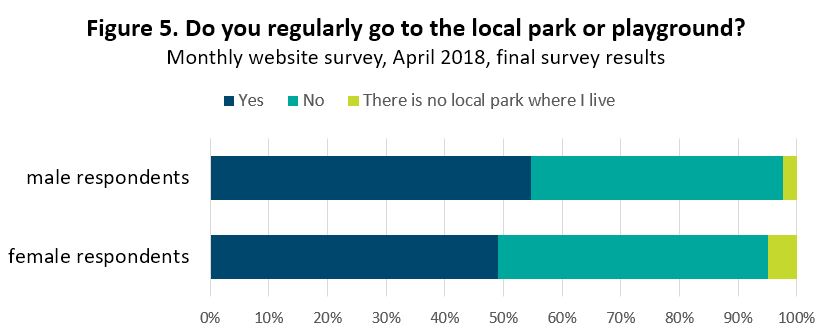
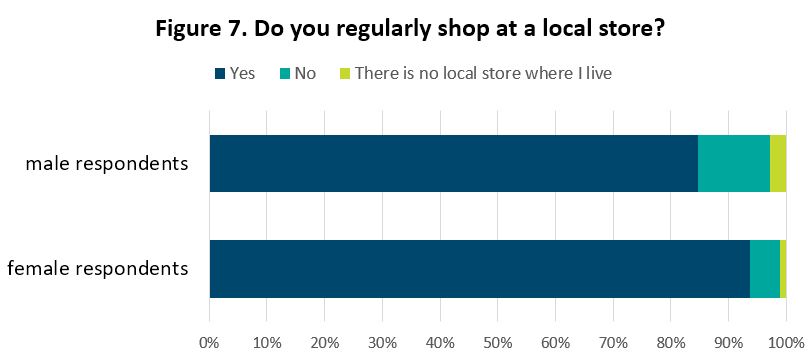
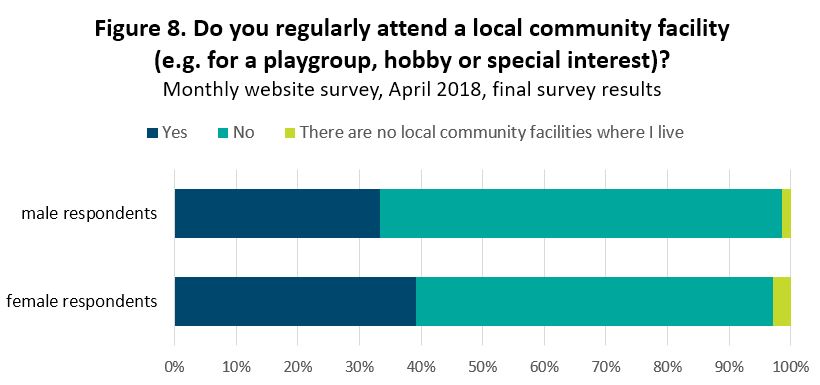
Overall, people who responded ‘no’ to questions about whether they participate in the community were slightly more likely to say that the amount they chat with their neighbours is too little, compared with people who do engage with these different domains of community activities and facilities. People whose children do not attend a local school and people who do not regularly go to the local playground or park were over one-third more likely (39% and 36% respectively) to respond the level of contact with their neighbours is too little. Respondents who do not play in a local sport team were twenty per cent more likely to respond the contact with their neighbours is too little, and people who do not regularly attend a local community facility were around 28 per cent more likely, compared with people who do engage in these activities. Whether someone regularly shops at a local store had the greatest impact on whether they were likely to respond that the amount of contact with their neighbours was enough, with people responding in the negative being forty-two per cent more likely to respond that their neighbourly contact is too little. This reflects research by Berry and Shipley (2009) which found that involvement in the community is an important indicator of social capital.
